The Day Elvis Didn't
Meet Nixon
(Click to Zoom In and Out)
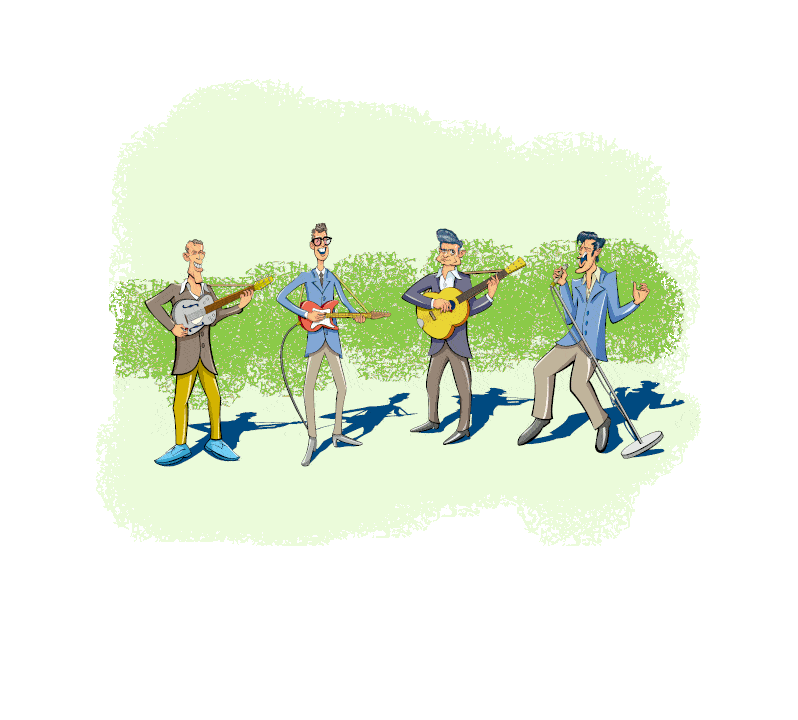
Of course, everyone knows The Day Elvis MET Nixon was December 21, 1970. So the Day Elvis Didn't Meet Nixon was any one of the other 1 days since the beginning of the Universe.
But if we're talking about
 THE DAY
THE DAY
 ELVIS
ELVIS
 MET
MET
 BUDDY HOLLY
BUDDY HOLLY
 CARL PERKINS
CARL PERKINS
AND
 JOHNNY CASH
JOHNNY CASH
... there is some question. One difficulty is that although there are sources that list the various appearances of Elvis and other stars in the early days of rock and roll they don't always agree when Elvis was in town. So the dates given here must be taken with a few grains of salt.
The story is well-known that Elvis made a demo disc of "That's All Right" at Sun Records and the recording led to him touring on the professional circuit. By early 1955 - maybe even on January 5 - Elvis was appearing in Lubbock, Texas. A young Charles Holley (yes, there really is an "e" in the last name) was in the audience and after the show he introduced himself. In these early days it was de rigueur that the performer would mingle with the crowd and sign autographs. Later, though, cotton bales had be stacked in front of the stage to keep the fans at bay so Elvis could leave the building.
Buddy's Bass Player
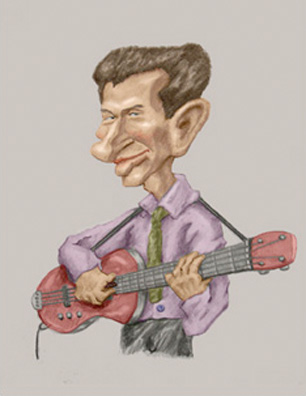
Before
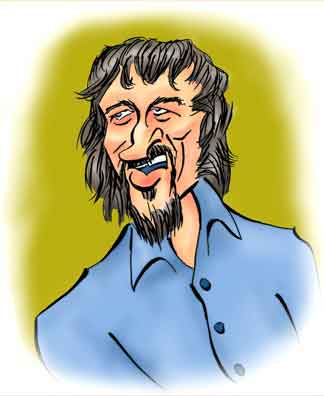
After
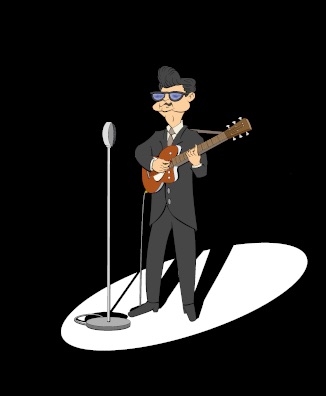
Roy: In the audience.
Lubbock treated the performers right, cheerfully paying Elvis his $35 fee - which was $10 more than he could pull in from other venues. The town - 'way in the western part of the state - also had good entertainment facilities. That made sense as the 7000 students at the Texas Technological College (now Texas Tech University) had to have something to keep them occupied when they weren't at their studies. The city sported the Fair Park Coliseum and there was also a nightclub named after New York City's Cotton Club. So Elvis - like the letter he wrote - kept coming back and he played at the Cotton Club on January 6 and at Midland High School on January 7.
Although at the beginning of 1955 Buddy was yet in high school, he was performing professionally. After the January concerts, Elvis was back in town in mid-February and at one these concerts Buddy and his band were the opener. A smooth-shaven and pompadoured Waylon Jennings was also present and he met Elvis backstage. Waylon, as everyone knows, would later play electric bass for Buddy.
Elvis played two concerts on February 15, one at the high school field house and another at the Lubbock's Municipal Auditorium. The next day Elvis played at Odessa High School (over a hundred miles to the south) where a young Roy Orbison was in the audience.2 So in two days Elvis picked up a whopping $105.
Footnote
Another source states Elvis was at Odessa on January 4, 1955, but nothing about him being in town in February - another example of the uncertainty in tracing when Elvis was in the building.
So we see that early on Elvis was a rising country star. Yes, a rising COUNTRY star. You'd even see ads that read something like:
 SENSATIONAL
SENSATIONAL
 COUNTRY
COUNTRY
AND
WESTERN
 STAR
STAR
 ELVIS
ELVIS
PRESLEY
Although television ownership was rising - over 50% of American families had a set by 1955 - if you really wanted to see Elvis and the others play more than a song or two you had to go to a concert. Fortunately before the pop music industry ended up practically controlling the national economy, everyone could afford a ticket. Typical prices were $1 to $2 and kids could get in for 50¢.3
Footnote
Correcting for inflation a concert ticket today should cost between $5 (for the kids) and $10 to $20 for adults. Actually getting into a concert can easily cost ten times the inflation corrected fee while one recent concert had some of the tickets hit $5000.
You didn't have to drive a hundred miles to see the show either. The artists were happy to play wherever they could assemble an audience. Elvis might appear in the National Guard Armory in Amory, Mississippi, then move to the High School Gymnasium in Bono, Arkansas, and then play the High School Auditorium in Guymon, Oklahoma.
So obviously the early touring schedules were hectic. On April 9, 1955, Elvis was back in Lubbock playing at the Cotton Club and Carl, John, and Buddy were also on the bill. Buddy himself had preferred playing "hillbilly" music - the early term for Country and Western - and the story is that after hearing Elvis play, he switched to the souped up and frantic style that would soon be (and still is) called rockabilly.
Elvis and John returned again on October 15, and although Carl and Buddy aren't specifically mentioned, they may have been there. But once a local disc jockey made some 8mm home movies of the four - Elvis, Carl, John, and Buddy - kidding around backstage. So we know that at some point all four did meet.
It's natural to wonder just how much notice was given in the news stories about the concerts which featured four iconic singers whose music transformed not just America but the World. Well, not much.
Although the post-Millennium World has practically deified early rock and roll stars, back in the 1950's they were largely ignored. Life Magazine, the most popular magazine in the nation from 1938 to 1972, never mentioned Buddy Holly until 1964 and that was only after a Fab Four Quartet from Liverpool said they liked his music. In the 1970's kids spent hours discussing what the multiple allegories of Don Mclean's American Pie meant because many of them had never heard of Buddy Holly. It really wasn't until 1978 with the release of the movie, The Buddy Holly Story starring Gary Busey that Buddy came back into the national consciousness.
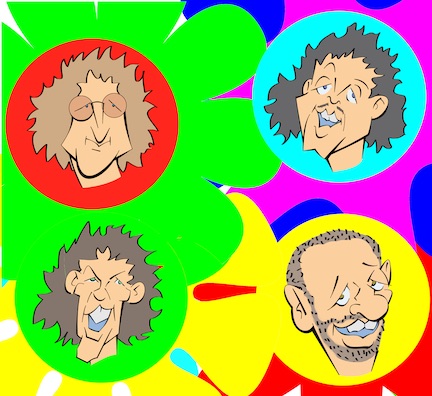
The Fab Four Quartet
They liked Buddy's music.
Even after Elvis switched from Sun Records to RCA - then one of the top labels - and had his first Gold Record with "Heatbreak Hotel", he was far from being of major celebrity. Notices for his performances remained tucked away in the inner pages, and concerts by Leonard Bernstein brought more attention (and bigger fonts). An ad for Elvis's records might read:
Good Rocking Tonight, Trenier Twins; The Happy One, Duke Ellington; I'll be Home, Flamingoes; Cry Me a River, Kitty White; Too Close For Comfort, Sammy Davis, Jr.; Blue Suede Shoes, Elvis Pressley; The Sleep Walker, Ray Anthony; Say It Isn't So, Betty Johnson.
That's right. Elvis Pressley.
Then when Elvis appeared in San Angelo, Texas in early 1955, the playbill read:
Big Stage Show
5 Big Stars
ALVIS PRESLEY
Sheesh! They couldn't even get his name right!
But by 1956 the reporters began to spell the name correctly, and the world had decided Elvis was NOT a country singer. Instead his music was part of that new cacophony called rock and roll. This moved Elvis well away from the country circuit and he made his first appearance on mainstream national television.
But even after several performances on The Dorsey Stage Show and despite the enthusiastic audience response - particularly from the young ladies - reviews of Elvis tended be dismissive and only reluctantly reported. By mid-March a well-known music critic wrote:
This reporter has doggedly steered clear of the subject of rock n' roll music, but an indignant little doll has forced me out into the open with a letter charging that I've been deliberately ignoring the "greatest performer of all," a singer named Elvis Presley. He seems to be the hot-shot nowadays with the teen set and if you haven't caught him on the Dorsey Brothers show (Saturdays. WTOP-9) or on the radio, you flip that dial selector mighty quick, dad.
At the moment, Elvis is honking about a place called "Heartbreak Hotel". So here we are, at last, with rock 'n' roll and how can you write about something that no one seems able to define or clearly describe?
I asked WWDC's Jack Rowzie yesterday and he termed it a first cousin of "rhythm 'n' blues." and let's not go into THAT. Jack spins a number of rock 'n roll tunes, likes many of them, and is considered by the dungaree [blue jeans] set as being with it. A CBS radio disc jockey named Fred Robbins, who evidently is looking for mail (and will get it), defined it to an AP reporter the other day as "a perversion of rhythm 'n' blues."
It just seems the critics were determined not to like Elvis come hell, high water, or screaming fans. One columnist known only as "Jonni" (the quotes are in the original) wrote about some upcoming entertainments in Minneapolis and St. Paul, Minnesota, in May, 1956:
The Twin Towns [Minneapolis and St. Paul] are in for a treat Sunday, a double one at that. Count Basie and Joe Williams are making an appearance at the Minneapolis Armory at 8:30.
Elvis Presley is appearing at the St. Paul Auditorium in the afternoon and at the M[innea]p[o]l[i]s.[sic] Auditorium in the evening.4 But I know which one I shall see in the evening, the Great Basie.
Footnote
Once more sources disagree. One tabulation of Elvis's concerts does mention him playing at the Minneapolis City Auditorium in mid-May but nothing about an afternoon concert in St. Paul.
But then in the review of Count Basie's show "Jonni" couldn't help mentioning Elvis.
Elvis Presley worked over at both of the "Twins" auditoriums Sunday afternoon and night. A lot of people get disgusted at the way he moves his body when he is trying to put over his music. But it's all in the way he presents his work to his public, who clamour [sic] for the clown. Will Jones calls him the "bump and grind artist".
Count Basie's band was the greatest Sunday night at the Minneapolis Armory. A lot of people went there expecting his music to be on the R & B side of life, but he is not like that. He's not exactly progressive either. His band plays so nice, and Joe Williams sang - oh, can he sing! The place was crowded with people from all walks of life, and not to have enjoyed the music of the Count, one had to be crazy.
Newspapers were particularly happy to print stories where even the kids dismissed Elvis as a triviality. "He's the one with the sideburns, isn't he?" one teenager commented. "I don't care for him."
Elvis appeared on ...
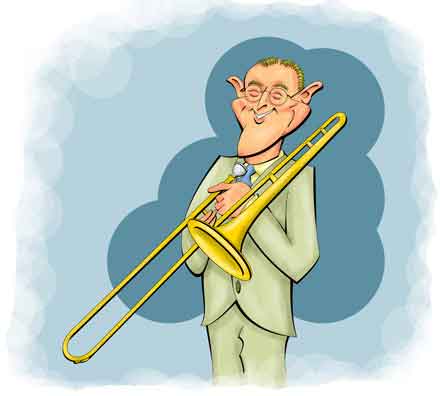
Tommy ...
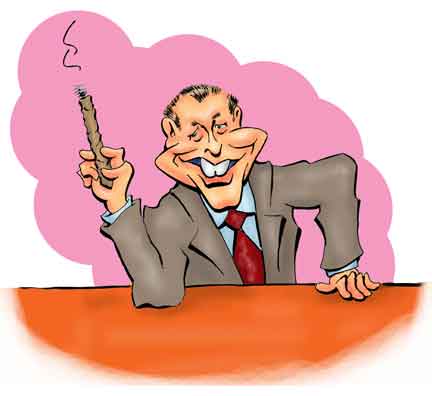
... and Miltie
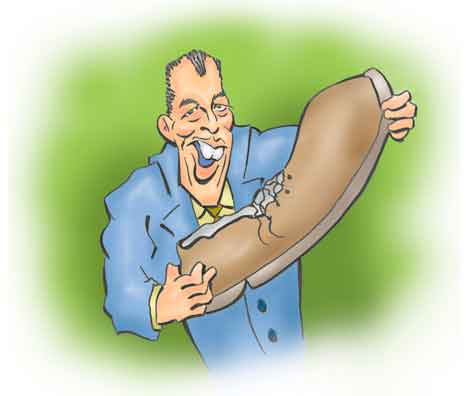
...before Ed
But it was a loosing battle and Elvis just wouldn't go away. On June 5, 1956, he appeared on The Milton Berle Show where he sang "[You Ain't Nothing' But a] Hound Dog" to the screams and shouts of the young ladies (and yes, a lot of guys liked Elvis, too). After the song Milton came onstage and tried some Elvis-like dance steps. Unlike Queen Victoria, Elvis was amused.
Then the unthinkable happened. August 27, 1955 Elvis actually had a big write up in Life Magazine, the most popular magazine in America. There were other signs of approaching respectability when his first movie Love Me Tender was released in 1956. This wasn't just a teenage rock and roll musical but was about the American Civil War and it even touched on some serious social issues.
But the critics still seemed perplexed about Elvis's popularity. After all, the novelty should be playing itself out. But one television reporter, grudgingly perhaps, seemed to bow to the Inevitiably of Elvis:
Elvis Gyrates Upward
The Elvis Presley phenomenon, in case you've been looking or hoping, shows positively no sign of diminishing in intensity, And I turned the room upside down looking.
By every rule that the professional observer employs, the swivel-hipped, side-burned singer seems headed for an even more productive year (for him) in 1957.
This hardly seems possible, you say?
Then consider the gyrating facts. If you're the kind that clutches at straws, forget Elvis' flop at Las Vegas, where he was released from his contract after a brief run. (So was Wally Cox.) And forget that "Love Me Tender," his first motion picture, played to a half-empty house on Broadway.
Everywhere else, Elvis is breaking records and sending TV ratings up in skyrocket 'style. And while "Love Me Tender" was, as the trade saying goes, "soft on Broadway," it racked up close to $50,000 in 17 days at Loew's Capitol here and the word from the hinterland (York, Pa., for example) is that it's a box office click.
The week-end business, when Presley's young fans could attend was tremendous, Loew's Jack Foxe reports.
And don't forget," he added, "It was a pretty weak picture."
Other signs of Elvis' continued popularity are plentiful:
Recognition: Not only are top stars (Steve Allen, Peter Lind Hayes, Red Skelton, etc.) lampooning him, but the talent scouts are beating their bushes looking for singers "like Elvis."
Recordings: They're still selling at a fantastic clip and RCA-Victor recently tore up his old contract and gave him a fabulous 20-year-deal. (He'll make money even when he's in the Army.)
TV: His third appearance with Ed Sullivan is on January 6. On his last three TV guest shots, one with Steve Allen and two with Sullivan, his presence resulted in whopping audiences equalling the best in the history of the particular programs.
Movies: Producer Hal Wallis recently signed Hal Kanter (George Gobel's former director) to direct "Running Wild," which is reported set for production early next year. It's Elvis' first real starring role. Twentieth-Century Fox also has plans.
But it was also clear that the writer was hopefully hinting for some schadenfreude.
Uncle Sam, of course, could put a crimp in Elvis' activities, not to mention his sideburns, should the Memphis draft board send the customary "greetings."
Even then, it's possible for Col. Parker, his manager, to keep the singer-actor in the limelight by judicious use of his week-end passes and furloughs for TV "one-shots" and recording dates. Eddie Fisher appeared on a number of TV shows during his two-year hitch, most of which he served in Washington.
Remember the clamor and the crowds at the New York theater when Eddie played his first show after his discharge?
Despite the eagerness of the critics to brush out the former country and western singer, he ended up as the most recognized entertainer in the history of the world. But how that transition was ultimately achieved is, as they say, another story.
References and Further Reading
"When Elvis Met Nixon: The Bizarre Story Behind This Photo", Rebecca Laurence, BBC, March 29, 2016.
Elvis in Texas, Stanley Oberst and Lori Torrance, Taylor Trade Publishing, 2001.
"1955-56: Elvis Impacts the Icons of West Texas Music", Chuck Lanehart, Lubbock-Avalanche Journal, May 4, 2019.
"The Earliest Footage of Elvis Presley, Buddy Holly and Johnny Cash (1955)", Open Culture, July 2, 2013.
"Rare Home Footage Of A Young Elvis Presley, Buddy Holly, Carl Perkins, And Johnny Cash", Jane Kenney, Do You Remember, 2019.
"Johnny Cash Concert History", Concert Archives.
"Elvis Presley", Concert Archives.
"Johnny Cash Tour History", Johnny Cash.
"Elvis in Texas", Joe Specht, Handbook of Texas, Texas State Historical Society, July 14, 2014 (Revised: January 15, 2020).
"Rock-'N'-Roll: A Frenzied Teen-Age Music Craze Kicks Up a Big Fuss", Life Magazine, April 18, 1955, pp. 166 - 168.
"Buddy Holly's Classmates Remember The Pioneer 60 Years After 'The Day The Music Died'", Betsy Blaney, National Public Radio, February 3, 2019.
"Elvis - A Different Kind of Idol", Life Magazine, August 2, 1956, pp. 101-109.
"Inside the Las Vegas Show That Turned Elvis' Career Around", Richard Zoglin, Time Magazine, July 23, 2019.
"Then vs. Now - The Price of Rock + Metal Concert Tickets", Todd Fooks LoudWire, December 20, 2022.
"Flashback: Elvis Presley Sings 'Bridge Over Troubled Water' in 1972", Andy Greene, Rolling Stone, May 1, 2014.
"Elvis Presley's Billboard Chart Records", Gary Trust, Billboard, January 8, 2015.
"The Dorsey Stage Show: Elvis' Jumping-off Point in '56", Alan Hanson, Elvis History, 2011.
"Elvis' Worst Follow Up Records", Alan Hanson, Elvis History, 2013.
"Patrolling the Campus Beat", Kelsey "Kit" Collins, The Miami Times, May 12, 1956, Page 9.
"Sensational Country and Western Star Elvis Presley",The [Washington, D. C.] Evening Star,March 22, 1956, Page A-34.
"Friday Night! Elvis Presley Popular RCA Recording Star Wilson Line Pier 4, Maine Ave. a N", TeleVue Magazine, Page C9, The [Washington, D. C.] Sunday Star, May 6, 1956.
"On the Air: Rock 'n' Rollin; with the Punch", Bernie Harrison, The [Washington, D. C.] Evening Star, April 13, 1956, Page A-33.
"On the Air: All She Needed - A Good Script", Bernie Harrison, The [Washington, D. C.] Evening Star, April 13, 1956, Page A-33.
"On the Air: No. 1 Mouseketeer Is On His Way", Bernie Harrison, The [Washington, D. C.] Evening Star, April 25, 1956, Page A-43.
"Additional Amateur Show Pictures", Geauga [Ohio] Record, April 26, 1956, Page 3.
"On the Air: Bring Back Those Band 'Remotes'", Bernie Harrison, TeleVue Magazine, Page 2, The [Washington, D. C.] Sunday Star, May 4, 1956, Page A-35.
"Sunday's Best Reading: Pocketbook Issue in Politics Explored in Sunday Star", The [Washington, D. C.] Evening Star, May 4, 1956, Page A-19.
"Sunday's Best Reading", The [Washington, D. C.] Evening Star, May 5, 1956, Page 27.
"Elvis Rocks Teen Set" , Bernie Harrison, TeleVue Magazine, Page 2, The [Washington, D. C.] Sunday Star, May 6, 1956.
"Debs and Dates", "Jonni", The [St. Paul] Recorder, May 11, 1956, Page 5.
"Debs and Dates", "Jonni", The [St. Paul] Recorder, May 18, 1956, Page 5.
"Let's Get Acquainted", Gloria Fina, The [Chardon, Ohio] Record, May 24, 1956, Page 9.
"Midtown in New York", Robert Sylvester, [Washington, D. C.] Evening Star, May 31, 1956, Page A-35.
"This Week in Records", Albert Anderson, [Washington, D. C.] Evening Star, June 1, 1956, Page 6.
"Milton Berle Show" , [Washington, D. C.] Evening Star, June 25, 1956, Page 17.
"On the Air: Steve Allen's Varsity Drags", [Washington, D. C.] Evening Star, June 25, 1956, Page B-1.
"30 Children, Here as 'Junior Ambassadors/Tour Capital but Miss Visit With President", [Washington, D. C.] Evening Star, November 21, 1956, Page B-1.
"On the Air: No Recession In the FM Area", Bernie Harrison, [Washington, D. C.] Evening Star,November 3, 1960, Page C-19.
"Elvis Gyrates Upward", TeleVue Magazine, Page 1, [Washington, D. C.] Evening Star, December 16, 1956.
"The South Plains Fair's History is Lubbock's History From Humble Beginnings to 'The Grandaddy of West Texas Fairs'", South Plains Fair.
"Cotton Club", Ashley Pettiet-Richey, Texas State Historical Association, September 1, 2014.
"What Elvis Gets Right — And Wrong — About the Real Colonel Tom Parker", Alanna Nash, Vanity Fair, June 30, 2022
"rockabilly", Merriam Webster.